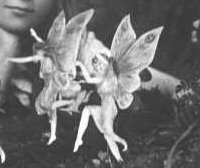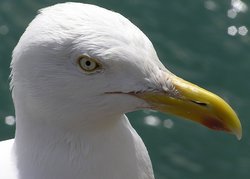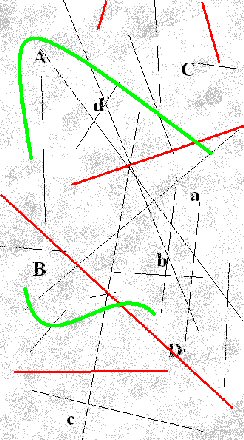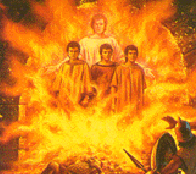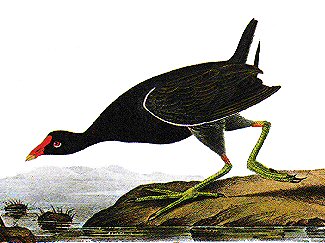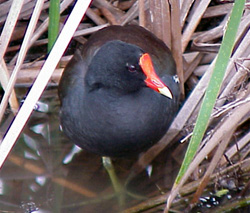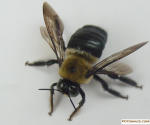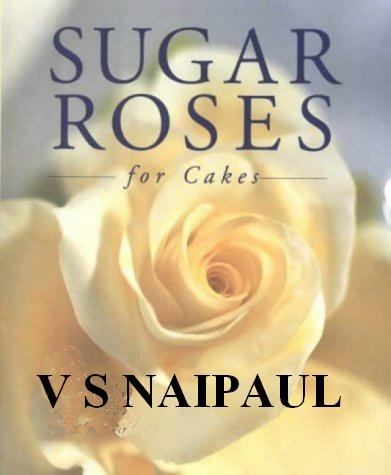Part One appeared on 28 September
I arrived at the Bird Inspectors' Hut to discover that it had been engulfed by a tsunami and lay in ruins. A solitary moorhen was paddling about where the door used to be, but there was no sign of the inspectors. I fancied that perhaps this might be a talking moorhen which could apprise me where they had gone, and asked my question in a slow, clear, loud voice, as one might use in speaking to a recalcitrant infant. But of course the moorhen was incapable of speech! What was I thinking?
I felt it more important than ever to track down at least one of the bird inspectors and relay my theory that crows were nesting in the horrible cave, with alarming consequences. In my experience, most bird inspectors sport Italianate mustachios and preen them fanatically with oils and waxes, so I decided to head off on foot for the nearest village and seek out a shop selling oils, waxes, and other hair treatments.
I was in luck, for as soon as I strode purposefully into the village I saw not only such an emporium, tucked between a wholesaler of dinghies and a clapboard hovel, but a man with Italianate mustachios lurking in the doorway. He was sopping wet, making his moustache droop, but that made it all the more likely he had been caught in the tsunami.
I hailed him from a distance of some forty feet. That is the last thing I can remember. I have no idea what happened from that moment until today, three weeks later so I am told, where I found myself sitting in an armchair staring out at a dying lawn, being proffered cups of tea and mashed potatoes by an oversolicitous nurse. Her name, she told me, was Primrose. That name rang a faint bell in my memory. I associated it with something petrifying and terrible, but Primrose the nurse seemed to be neither. In fact her fawning was getting on my nerves.
A\plate of mashed potatoes
I wanted to ask her where I was and how I got here, but she had already skipped off to fetch more potatoes. Deciding to follow her, I walked rather unsteadily into a corridor. It was painted a hideous shade of orange, and on the walls hung framed portraits of members of Jethro Tull, Emerson Lake and Palmer, and Barclay James Harvest. Was this some kind of benighted prog rock haven? I should add that these were paintings rather than photographs, although perhaps the word I am looking for is daubs. My infant child could do better, if I had an infant child, but I do not. Long ago I vowed never to bring a new being into a world with a horrible cave in it, lest the mite should accidentally wander into it. I could not forgive myself if such a thing happened.
Left to right : Emerson, Lake, Palmer (possibly Parker)
I could hear what sounded like potatoes being mashed coming from an open doorway over to my left. Entering the room, however, I did not find Primrose. Instead I was confronted by a slobbering ghoul. It spoke - or rather, groaned - at me in Latin, for it was a Vatican ghoul. Atop its gruesome head I could see the tattered remnants of a biretta, in which a number of locusts seemed to be feeding. Were they eating the ghoul's straggly locks, or its priestly hat? Or both? I was so fascinated by the locusts that I am afraid I paid little attention to the gravel-voiced Latin being spouted at me. At this point Primrose came in.
“There you are, Mr MacTavish!” she cooed sweetly, addressing the ghoul, “I've been looking all over for you. It's time for your mashed potato poultice. Come with me, there's a dear.” She took it by what I can only assume was its arm and steered it away, still groaning. I was rather disconcerted that Primrose had ignored me completely. Perhaps I was being oversensitive. I looked at my wristwatch and saw that it was just coming up to midday. Why in heaven's name was I dressed in pyjamas? I opened a cupboard and rummaged around until I found a shiny and brand new boiler suit. I changed into it and checked how I looked in a mirror, noting that its broad black and yellow hoops gave me a faint resemblance to a giant bee. It was time to leave this place, wherever it was. I pranced out onto the lawn and peered around, looking for a signpost.
I have always been fond of crocuses, and there was a clump of them nearby. In the absence of a signpost, I decided I could do worse than tarry awhile examining their flowers and leaves, and perhaps scrubbling in the soil to have a quick look at the corm. One should take one's pleasures as one can, and if I was to stride onward with a spring in my step, a few minutes' contemplation of foliage would calm my brain for the inevitable travails ahead. These were early crocuses, or Crocus tommasinianus, as no doubt the ghoul could have told me. I wondered whereabouts on his grisly frame Primrose the nurse was going to apply that poultice of hers. His head? That spindly arm? I wondered, too, how she would cope with the locusts, who would devour the mashed potato as quickly as she could apply it.
Early crocuses : Crocus tommasinianus
Thus lost in thoughts of potatoes, ghouls and crocuses, I failed to notice that a man had approached me, all but silently.
“Good day to you, sir,” he said, clearing accumulated phlegm from his throat as he did so, “Would I be correct in thinking you know something of the horrible cave?”
I looked up, astonished, and saw that my interlocutor was none other than the so called limping irredentist, Florenzio Pabstus.
That ends the second episode of The Horrible Cave, with more to follow soon enough.



